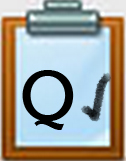Q3 Web Presence Introduction
Introduction
A web presence affects your digital footprint. In this Quest, you are going to create a draft of a website. Talk with your teacher about options for creating a web page using: Google Sites, Canva, or another recommended resource.
Please note that students under the age of 13 are only allowed to have their own web page when created through special student accounts and with signed parental/guardian permission.
I Can Statements
- create a draft of a website
- use a design process to create my website prototype
Title of video: 5.Digital Footprint - Web Presence (1:25) Direct link
Competencies & Standards
MITECS Michigan Integrated Technology Competencies for Students, and
1. Empowered Learner
a. Articulate and set personal learning goals, developing strategies leveraging technology to achieve them, and reflect on the learning process itself to improve learning outcomes
2. Digital Citizen
d. Manage their personal data to maintain digital privacy and security
6. Creative Communicator
b. Create original works or responsibly repurpose digital resources into new creations




